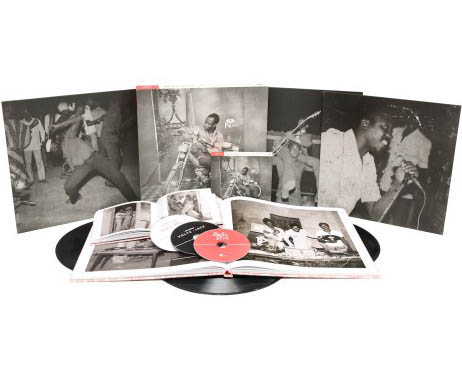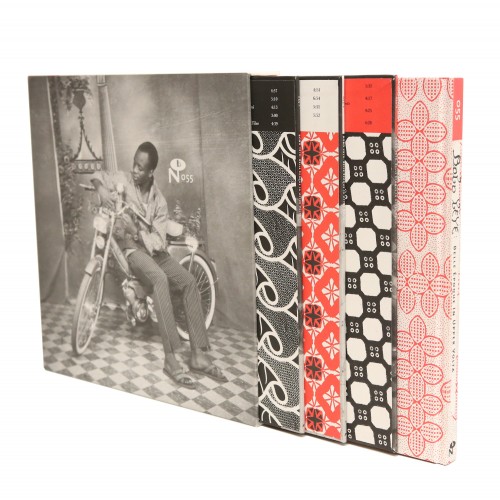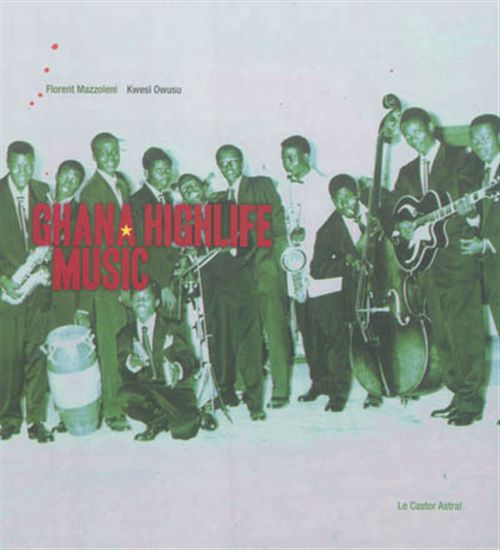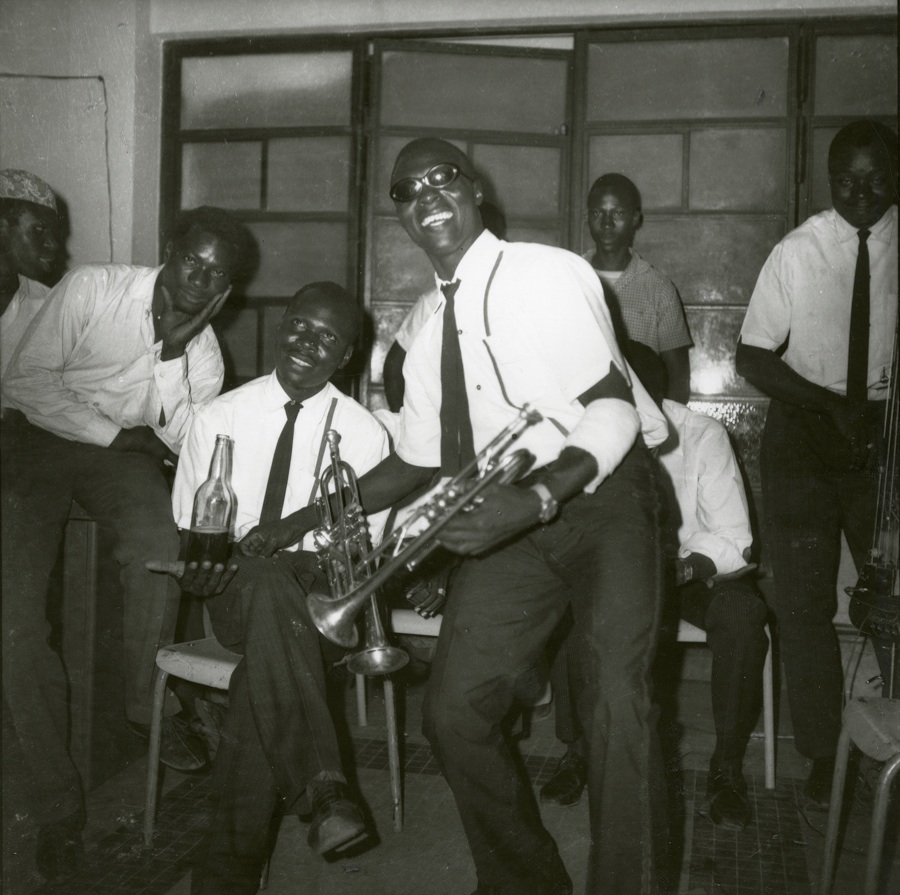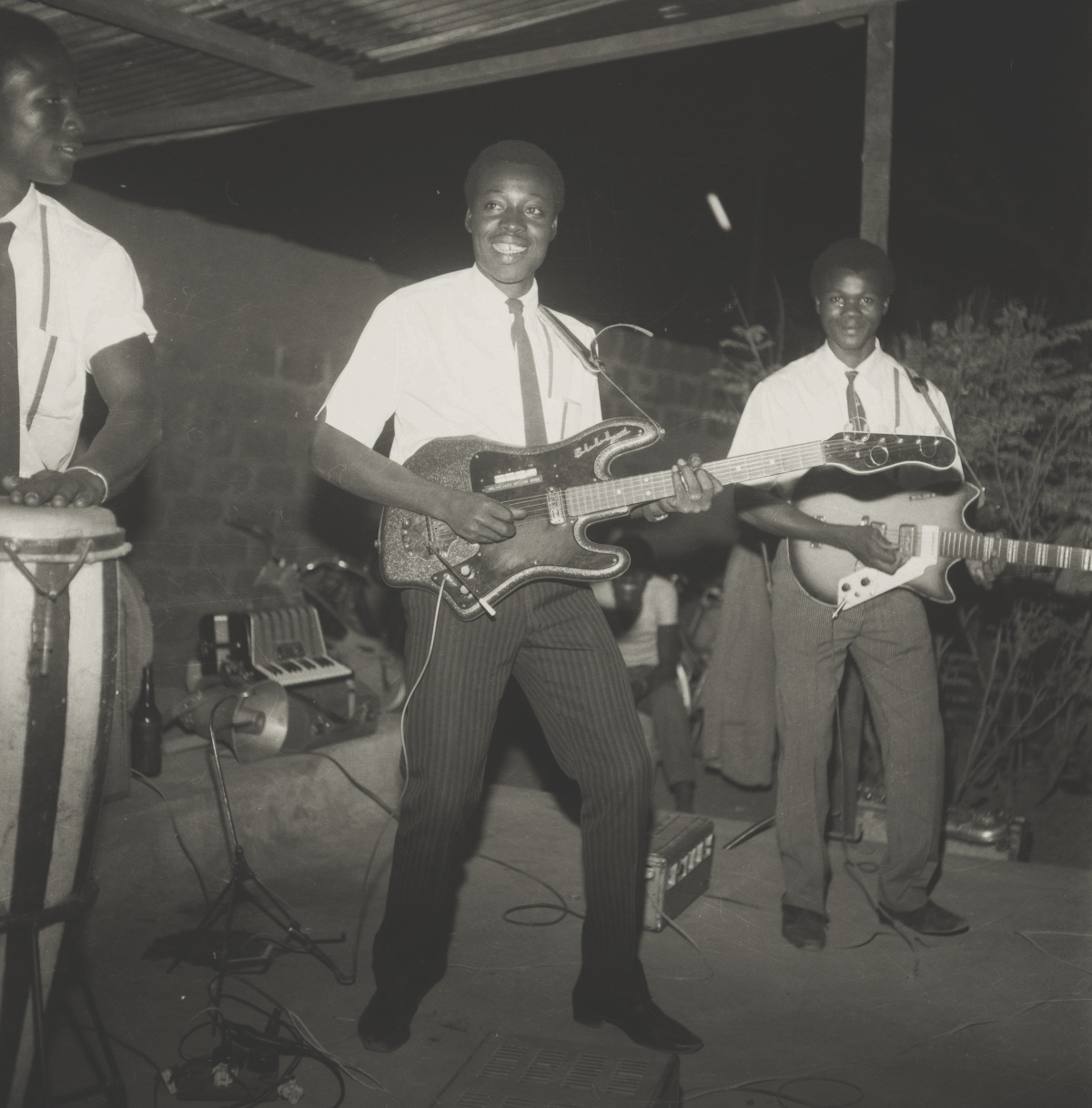Florent Mazzoleni is a journalist, author, vinyl collector and record producer based in Bordeaux, France, with a longstanding focus on African music. He recently compiled a three-CD box set of classic tracks from Bobo Dioulaso, the second city in Burkina Faso: Bobo Yéyé: Belle Époque in Upper Volta (out Oct. 28, on Numero Group). Florent has a deep commitment to documenting and preserving West African music from the 1960s and '70s—for many, a golden age. Afropop’s Banning Eyre reached Florent by Skype in Bordeaux on Sept. 6 to discuss Bobo Yéyé and other projects for the program “Off the Beaten Track in Malawi and Burkina Faso” Here’s their conversation.
Banning Eyre: Let's begin at the beginning. Introduce yourself and tell us a bit about your work and how you came to this project.
Florent Mazzoleni: I am a French writer. I used to be a journalist for many years, and when I first traveled to Africa in the early 2000s, I got a chance to spend time with Mahmoud Ahmed in Ethiopia, Cesaria Evora in Cabo Verde, Ali Farka Toure in Mali, so that's where my passion for African music [began]. And the more I came back to Africa, the more I fell in love with the different kinds of music from the continent, and I was lucky enough to meet all those great artists, be they Bembeya Jazz or Amadou Balaké or the guys from Orchestre Poly-Rythmo. I produced their new album, Madjafalao, which is coming out next month.
So it started like that, and then around 2007, I started writing my first book on African music, and I've written about 10 more books on the subject, dedicating books to Ghana music, Burkina Faso music, Mali music, as well as Benin music, which came out last year. I have done a lot of compilations and reissue work, and while doing research in Burkina Faso a few years ago, I first met the great singer Amadou Ballaké, and also Sory Sanlé, a kind of unsung photographer from Bobo-Dioulasso, which is further south than the capital city, Ouagadougou.
I was looking for Sory Sanlé because I knew he had made some very nice record covers for Volta Jazz back in the ‘60s. So I went two or three times to Bobo, and I finally managed to find him. The first time I met him, he was just outside his tiny photo studio, and he was burning some of his old archives and negatives. He was saying, "Oh, ca c’est les vieux choses.” That is old stuff. No one cares about that anymore. Luckily enough, I managed to save a few boxes of negatives, and I went back to the place where I was staying and spent a few nights looking at the negatives, and I found there was quite something there. In the end, I ended up working with him for the last four or five years, and going through his extensive vaults, which includes about 200,000 negatives. And through that, I started gaining access to the music as well that was being made in Bobo-Dioulasso at the time, music by the likes of Volta Jazz, and Les Imbattables Leopards, and Dafra Star, and Echo Del Africa National.
Basically, this was the soundtrack to Sory Sanlé’s pictures, so I approached Numero Group [a record label] a few years ago telling them that there was quite a story to be told and that's how the whole CD Bobo Yéyé happened.
Wonderful. Wow, you've written a lot of books. It's taken me 20 years to write two, so I'm impressed. I have your Ghana book—Ghana Highlife Music (Le Castor Astral), which is great, rich with information, photography, album art—it's a terrific resource. Are the other country books similar in format?
Exactly. They are the same presentation, Basically, I've written books in the past on James Brown, rock 'n' roll, rhythm & blues, and funk and disco music, but I knew that something was missing in African music. So the last few books I've done are just dedicated to African music, and as a record collector, I pay a lot of attention to the record covers, the sleeves and the design, and the sound, how it was made, and how this recording came to circulate, and how they were distributed throughout Africa, and sometimes to Europe and the U.S. So I fell in love with all this information that comes together just reading liner notes, or looking up the sleeve from an old dusty African LP. Most of these books proceed from my own archives which I was lucky enough to gather doing so many trips to Africa. I go there every two or three months, at least four or five times a year for 14 or 15 years now.
While doing the book on Burkina Faso, I managed to find a few hundred vinyls from the vaults of Voltaic Music, from the heyday, which basically runs from the late ‘60s to the mid-'80s. I did over 60 interviews, and I found about four, 500 photographs. That's how the Burkina Faso book started. And I did the same with Mali, and the same with Ghana, and the same on a smaller scale with Benin. I see this as a collection, because everybody knows about the Beatles and James Brown and all these things, but nobody really knows what happened to the Rail Band or Bembeya Jazz or Volta Jazz or O.K. Jazz. I am currently writing a book on Franco and the O.K. Jazz to be released next year, because for me, Franco and O.K. Jazz are just like the basis for modern African music.
Amen. And you are right. This is such a missing component in the literature. There are so few serious resources on African music. You were lucky to find a publisher willing to put all those books out.
It is a small, independent French publisher called Le Castor Astral, but still I managed to do at least four or five books with them about African music, and I've done other books as well with other publishers. I have one of them that was the catalog for the exhibit I curated at the Zinsou Foundation in Cotonou, Benin, last year, which was called "African Record." It wasn't the story of African music as such, it was the story of African records, and how these records came to circulate across Africa. It was bilingual, like the Ghana book, in both English and French. Most of the other books are only in French.
I'm glad you're doing a book on Franco. There's so little on him, and as you say, he is foundational.
That's how it all started. Even traveling to Burkina Faso, Ghana and Benin, I found out that in the early '60s there were just one or two bands that came, and it seem like every time there was a foreign band that came to this tiny and remote country, it was Franco and OK Jazz. Basically he played all over Africa, even in Nigeria. Kenya, Tanzania, Sudan, Chad, Senegal, all over the place. And I was lucky enough to gather a few pictures from the early ‘60s when O.K. Jazz basically laid out the modern basis for African music, a fusion of local tradition mingled with Cuban dancing and some modernity and the guitar playing in the percussion and the way the horns were used. Basically, all of this came together. And all of this was spread around because of O.K. Jazz traveling to all these countries, and because of Radio Congo playing all this wonderful classic Congolese music all over Africa.
You must have an enormous vinyl collection.
I do have a few. I think I have quite an extensive collection, and it's all classified country by country. For Burkina Faso, Guinea, Mali and Senegal, I think I have 99 percent of the whole discography by now. I think these records are testimony to how prolific and exciting these musical scenes were at the time. Right now, nobody knows that in Burkina Faso, in Bobo-Dioulasso, Volta Jazz did over 30 seven-inch singles, which was totally unheard of at the time, and from a totally unheard of band, so it is quite amazing.
I do also collect 78s as well because I think they also laid out the basis. I think my 78 collection will start to be reissued, possibly with Numero Group, from Mali and Togo, Congo and Benin and Nigeria, and Ghana for sure.
Let's talk about Burkina Faso. And let's start with Amadou Balaké because he is such an amazing talent. It is so clear on this record you produced—In Conclusion (Stern’s Africa, 2015). I was listening to this with Sean Barlow the other day, and we were remarking on how it was that we had never heard of this guy. How is there no release before this? Even one that would've reached our attention? I mean, we have so many obscure releases from Mali, Ghana, Nigeria and Guinea. If you are interested, you can find lots of music from those countries, but almost nothing from Burkina Faso. And yet you have this incredible talent. Why do you think this is?
I think it is due to the fact that back in the ‘60s and ‘70s, Burkina Faso was, and unfortunately still is, one of the poorest and remote countries in the world. It is a landlocked. It doesn't have any sea access. It is located between Ghana, Togo, Benin, Niger and Mali. Music there wasn't circulating. It was just local music played by the locals for the locals. Of course, you had touring bands from Mali, from Congo, as we said, but there was only a tiny production in Burkina. There were at least two well-established production companies there, but they didn't have enough money to send their records outside of the country, except possibly to Mali and the Ivory Coast, because there were a lot of Voltaic people back then in the Ivory Coast.
And then came the coup, which was led by Thomas Sankara in 1983. Basically that made the country totally blocked from outside influence. Thomas Sankara, for everything else that he did, he basically killed the music and the culture there. There was a curfew for musicians, and he said that all concerts must be free, so musicians couldn't get any money, and basically the whole Voltaic scene, which I cherish so much slowly died away. Then after Sankara was killed by Blaise Comparé in 1987, basically the music and the culture from that country became totally estranged. No one really knew what was going on over there.
And still, there was this giant of West African music, Amadou Balaké, who had traveled a lot. He started playing music along with Bembeya Jazz in Guinea in the early ‘60s. He was friends with Kanté Manfila. He played with Sory Bamba in Mopti in Mali. He paid in the Ivory Coast. He recorded some records in Ghana. He came to meet James Brown in a New York airport when he was doing some salsa there. He lived in Paris, playing flamenco music. He has such a crazy life. And basically, he was the voice of Burkina Faso music.
When I met him about seven or eight years ago, he was just in his compound, just waiting for nothing, waiting for no one in particular. He hadn't recorded music in many, many years. That's how I got the idea and the opportunity to save some money and fly down there and gather a band of really young musicians, really talented ones, and just work like that, in one take. It was done in a movie hall in Ouagadougou, that we converted into a recording studio to get the live feeling, like the sound people had in the old Stax studio in Memphis. It wasn't that ambitious, because our means were really low, but still, you know, we made it pretty cool record.
And what was amazing is how Amadou Balaké sang. Because he sang from his gut. These days, you have a lot of throat singers. They're doing some fancy stuff with their throats, but they don't really sing with their gut. Amadou Balaké was from the old school, and although he wasn't born a griot, he knew his griot and Mandingo repertoire by heart. He could practice those songs. So basically, that record was a fusion of these influences. You have to understand that during most of this recording, he was sitting on a chair. He wasn't even up and in the microphone. So that was just a truly mesmerizing performance that he did on that record, and after that, I dubbed some keyboard parts. I had to come back to Ouagadougou, and basically, he died a few weeks after that. That's why it was titled In Conclusion. That was the last testimony of this wonderful voice. To me, Amadou Balaké was in the top five male vocalists for African music ever.
He was just a giant, but so simple. He couldn't read, but he was one of the smartest people I have ever met. He could read your mind. He could read your eyes. He worked by instinct and by heart. It was just out of patience that he did this recording. And I think that's the sound that we wanted to get from him. That was an amazing moment for sure.
Fantastic. Thanks for that. And I know what you mean about singing from the gut. Parts of that record remind me a little bit of Momo “Wandel” Souma from Guinea, whom were lucky to interview many years ago.
Yes. Exactly.
Definitely old school. Very powerful. And it’s interesting that he wasn't a griot. He just knew Mande music from being around it.
Exactly. It was basically traveling back and forth between Guinea and Mali and the Ivory Coast. He knew that repertoire, and he came to learn those songs. He started doing griot singing when he dedicated a song in the ‘70s to Colonel Lamizana, who was the head of state in Upper Volta. That's how Burkina Faso was known at the time. So he was singing praises to the powerful and the rich. But most of the time, he was just a street singer, like Snooks Eaglin from New Orleans, or Huey Lewis in Memphis. He was just like that, a natural-born blues singer. It came from--I wouldn't call the troubled life--but he just moved back and forth, so he knew his repertoire. And at the time, around 1965 or ‘66, he told me he was a protégé of Sekou Touré back in Guinea. That's how he came to sing with Aboubacar Demba Camara, who was the lead singer with Bembeya Jazz.
Right, and who died tragically in his prime in a car accident in Senegal.
That's how he learned the repertoire, including that wonderful Mandingo love song, "Balaké.” That's how this name was given to him. He sang that so well that it was the best interpretation you could get. Even when we did our record, Balaké was saying that he couldn't record that song because it was from the Bembeya Jazz repertoire. I really had to press him, you know, to have him record that song. To me, it's one of the best songs on that record, and one of the best versions of that song.
What Amadou’s original name?
Amadou Traoré.
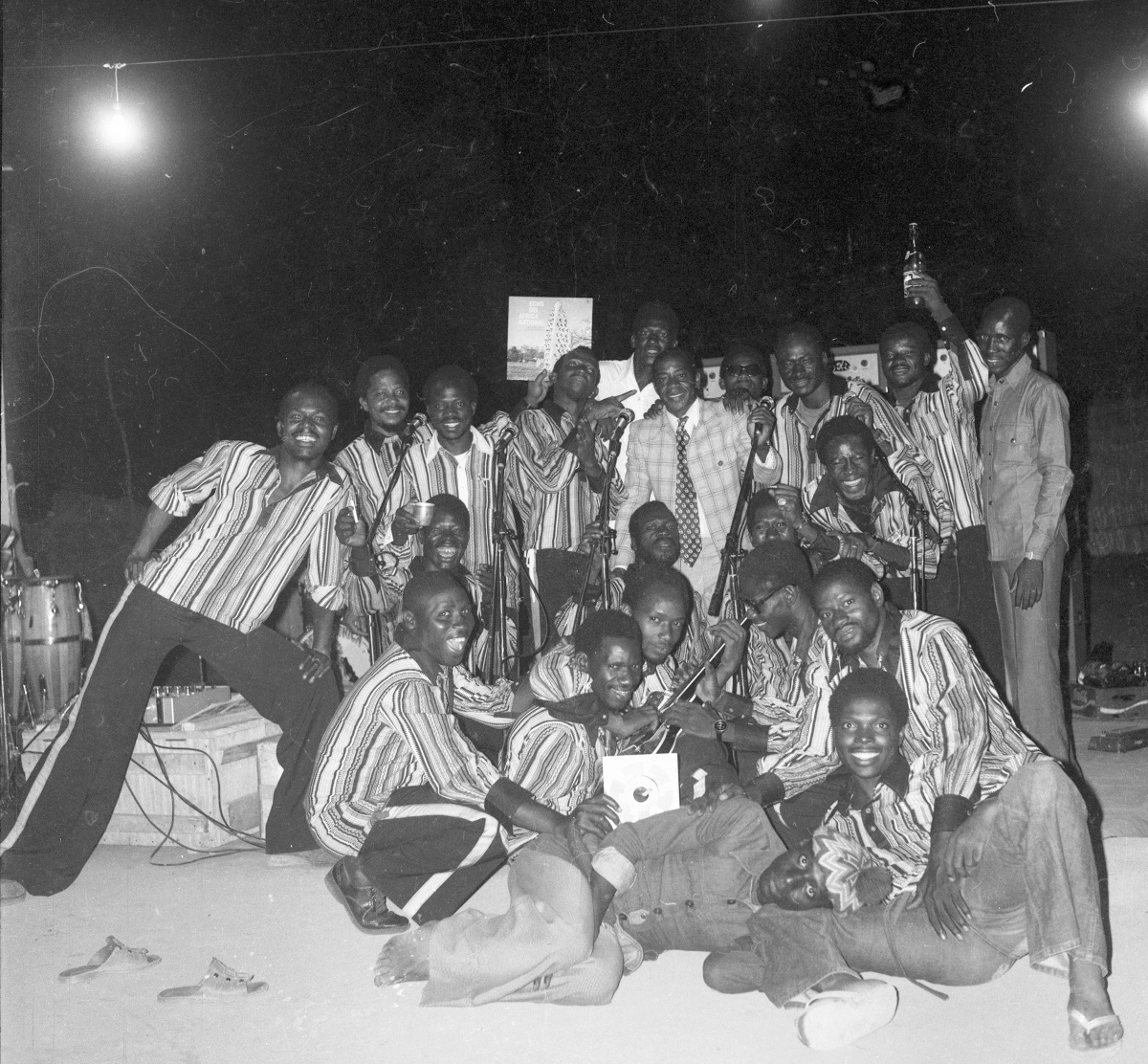 Echo del Africa National (Sory Sanlé)
Echo del Africa National (Sory Sanlé)
Let's talk about Bobo-Dioulasso. My first exposure to it was through my brother-in-law, who was in the Peace Corps there and always talked about it. Then I went there in 1996, driving from Bamako on a little adventure. I remember it as a lovely, peaceful town. But talk about it from a musical perspective. It was always the second city, I imagine, but in its prime, what was the music scene like there?
I think the scene in Bobo was pretty exciting. First and foremost, you have to understand that Bobo-Dioulasso is like Mali; it's like northern Ivory Coast. It's Mandingo country. Mandingo music. It doesn't have anything to do with the Warba and the Were music played up north in Burkina Faso. Bobo was a city filled with dancing, dance halls and bars and clubs. It was a big crossroad between Mali, Ghana, and the Ivory Coast. So it was a big market town. Like in the U.S., places like Memphis or New Orleans, a commercial hub gathers a lot of artists and musicians. So the Mandingo tradition was really important in Bobo-Dioulasso.
Then you had young entrepreneurs like Idrissa Koné, whom I had a chance to meet. He started both the Volta Jazz orchestra and the Volta Photo Studio, because he knew there was a sense of modernity to catch in many ways, and young people were craving to drive a car, to record some music, to listen to some records and to pose in fancy clothes in front of a photographer's lens. So this young guy Idrissa Koné started the whole cultural scene over there. So he enrolled and was a patron for many, many musicians.
And then you had the army musicians as well. Because Bobo was a big military base. For many years, it was the capital of Upper Volta, during the French occupation, especially in the 1930s, because it was at the end of the train line running from Abidjan to Bobo-Dioulasso, So it was a rich cultural city, very powerful before everything was transferred to Ouagadougou in the ‘40s and ‘50s. So you have a rich story, a nice political story and an economic context. You know, I was talking about this military band Les Imbattables Leopards de Force Armée Voltaic, which was basically sponsored by the Voltaic Army, but instead of playing military marches and things like that, they played rumba, Mandingo music, rhythm & blues, Cuban songs and funk and blues and all of that. So that was one of the main bands.
 Idrissa Koné and instruments (Sanlé)
Idrissa Koné and instruments (Sanlé)
One of the true stars of the Bobo-Diaoulasso music scene was Tidiane Coulibaly, who was back then the main singer of Volta Jazz. Tidiane Coulibaly got his career by working at the train station. He was a rail man, working on the Abidjan-Bobo line. Basically he was just like Jimmie Rodgers, the singing brakeman or something like that. He became the front guy for Volta Jazz, and after Volta Jazz’s demise back in the mid-to-late '70s, he started his own band Dafra Star, which is named after the Dafra River, a really tiny river that runs through Bobo Dioulasso.
You have to understand that Bobo, if it's rich and it's a commercial town with lots of markets and things like that, is also really fresh. You have a lot of lush vegetation. The trees are amazing, and the climate there is soft, really fresh compared to Ouagadougou where it can get really, really hot. In Bobo-Diaoulasso, people would go out to an open-air dance hall and dancing places, and they would party. Every Tuesday, you know, one of the bands was playing. Then Wednesday, maybe Dafra Star was playing somewhere else. And then on Thursday, the Leopards were playing somewhere else. And then on Friday you had this incredible band that was called Echo Del Afric National, which was playing somewhere else. So basically you had the new material of all these bands.
All these bands had their fans, and their patron as well. People would pay for them to record. They would pay for their fancy clothes. They would pay for them to get amplifiers and guitars and all of that. There was a lot of support from the local community for these Bobo musicians. Unfortunately, as I said, these bands never really came outside of the city. The only stayed in Bobo. Maybe Volta Jazz played a bit in the Ivory Coast, because they were recorded by a guy from there. And maybe Dafra Star played in Bamako, Mali. But that's how far they went.
They never really played tours or anything like that. The closest they came to that was during the FESTAC in Lagos in February 1977, where there was a big gathering of Voltaic Musicians led by Tidiane Coulibaly. And there were members of Echo Del Africa and Dafra Star and Volta Jazz representing the Voltaic delegation at the FESTAC in Lagos. Otherwise, unfortunately, this music never went outside the city limits. It was too local, and that has made it all the more fascinating, because there is a saying by Jean Renoir, the great moviemaker, which says, "The more local, the more universal." And that's what I hear in these songs, because they were remote. They didn't have great instrumentation or great recording studios or equipment or whatever, but still, they managed to sing with their guts, and to craft some incredible pop songs. To me, the Volta Jazz songs should be as well-known as any Beatles songs, or any Rolling Stones songs. Five or six decades later, it's just amazing to hear how crisp and how fresh and how dynamic this music still sounds.
Most of the time, the music was just recorded with a Nagra, which is just a good quality magnetic recording device. That's it. There wasn't any studio. Sometimes they would go to the Radio Volta, which was like the national radio basically, and they had access maybe to one of their studios. Most of these recordings were made with two microphones at the most. Sometimes it was just one microphone. I remember some of the musicians from Volta Jazz telling me that basically, they all gathered around the Bobo-Dioulasso zoo, There was a musical place outside there, and there was one microphone at the center. And they all sang and played at the same time, so it was a live recording session. They could do 10 songs in one hour, and that was it. It was really, really low distribution. I was told that most of the singles were made only in 500 to 1,000 copies. And that's why they're so scarce these days and so difficult to find. But you have to find them, and I was lucky enough to find most of them, and to gather them on this recording Bobo Yéyé.
Let’s go back to Idrissa Koné for a moment. It seems he's a very seminal figure in all of this. You say he started Volta Jazz. Tell me their story.
Basically, Volta Jazz started in the early ‘60s because of Idrissa Koné, who had a vision for the city youth from Bobo-Dioulasso. He had a bit of money that he had saved up from serving in the French colonial army back in the 1950s, and so he started a driving school, which is one of the first driving schools in Upper Volta back then. It was called Bobo Auto Ècole. Then he started a photo studio, which was called Volta Photo. That's where Sory Sanlé worked. Sory was a cousin of Idrissa Koné. And he also started Volta Jazz. At the time, the name “jazz” was fashionable, really trendy. You had African Jazz from Congo and, first and foremost for me, O.K. Jazz from Congo as well. But you also had Bembeya Jazz. Basically, everywhere you went in Africa, you had a “jazz” band: something jazz. It's related to some kind of modernity. It related somehow to America, black America. And jazz was a means to distinguish oneself from the past and basically to move ahead and to live with your time.
So Idrissa Koné wanted to create a band that everyone could affiliate with, and that's how he gathered these young musicians. There was Ibrahim Traore. You had Dieudonné Koudougou, who was a tremendous guitar player. Yago Abdoulaye, an upright bass player who was amazing as well. You have the young Mustafa Maiga, backing vocal and saxophone. And there were others, such as Christophe Adjani on trumpet and trombone, and Ardjouma Soré and Sibiri Koné on rhythm guitars. Then you had this amazing guy Tidiane Coulibaly, the singing brakeman from Bobo-Dioulasso. He was naturally gifted with his voice and he could sing any song.
That's how around 1965 or ‘66, Volta Jazz really came together, and Idrissa Koné was lucky enough to buy out equipment from an old French guy, M. Bordas, who at the time had some guitars and a drum set and all of that. So he could buy them out, and that was the basis for the Volta Jazz equipment. Back then, maybe they would travel to Ouagadougou, but most of the time they would just stay in Bobo-Dioulasso.
One of their first hits—if you could call it a hit, because there were just a few hundred copies made at the time—was called “Baba Soumano.” Baba Soumano was the name of the local police detective, and he was a kind of local hero. So basically, right from the start, Volta Jazz related to Bobo music. They would to dedicate a song to the Bobo driving school. They would dedicate a song to the Bobo Municipal Gardens. They would talk about the Bobo-Dioulasso zoo. In a wonderful song like “Djougou Malola,” it would also dedicate a song to the people of Bobo-Dioulasso. Because you have to remember they speak in Jula, which is close to the Bamana spoken in Mali. It's like a Mandingo language, a lingua franca for most of West Africa.
Basically it's the language for traders. So Idrissa Koné knew that singing in Jula and talking about Bobo and singing about Bobo and praising Bobo people and some of its well-known people, he could really create something in the city. And that's how Volta Jazz worked. There wasn't such a thing as Biennale in Burkina Faso, because it was even poorer than Mali, so the state wouldn't fund any cultural activities. But still, in the very few cultural events that were organized at the time, Volta Jazz was always the top band, and its music spread all over the country because of these influences, and because of the will of that guy Idrissa Koné.
Volta Jazz had a repertoire of around 100 songs recorded, and I'm sure that there are more songs in the vaults of Radio Bobo. I've been there a few times, but unfortunately it's a mess to find recordings and tapes. They would just do 10 songs in one hour, and then they wait for the next recording session, whenever Idrissa Koné got reels of tape, or some money was brought to cover the recording, and also to produce and distribute this record. Because these records were all made in Burkina Faso. The sleeves were printed in Burkina Faso. The records were pressed in Abidjan, which was one of the only countries, along with Ghana, Benin and Nigeria, to have a record pressing plant.
I assume by a seven-inch, you mean a single, just one song on each side.
Sometimes they had an EP, that would have four songs on seven-inch. But usually, it was classic seven-inch, with one song on the A side and one on the B side. That's it.
So probably a lot of songs were recorded that never got pressed.
Exactly. Most of what you hear on this box set, Bobo Yéyé, are just from what was released on vinyl. But my guess is that there are many, many, many songs that didn't make it onto vinyl, some that are still in the vaults and gathering dust on the tapes and things like that. I know where to look for those, and I hope to go back to Bobo with this box set for sure, and to give it to Idrissa Koné and the few remaining people, Sory Sanlé for sure, because it's his first photo book. But also to come to the radio there and see if I can get access to everything that is not released yet. Because as I said, Radio Bobo was one of the main places where people could record their music. And if not, it was in their local venue, because each of these bands—be it Volta Jazz, or Dafra Star, or Echo Del Africa or the Leopards— had their own venue, because Idrissa Koné had sponsored and financed Volta Dancing. But there was also the Normandy Bar, the Calebasse d’Or, the Dafra Bar, and then the Leopards would be playing at the military compound just across from Radio Bobo.
So you had other recordings that were made at the time, and even in some of the Sory Sanlé pictures, you can see how people were holding a microphone going straight into a tape recorder. Basically they recorded live every night that they played. I managed to find a few tapes from Echo Del Africa, but when I went back home and tried to listen to them, everything had melted basically. There wasn't any sound on the tape. That was too bad. But you have to be lucky to find a good one.
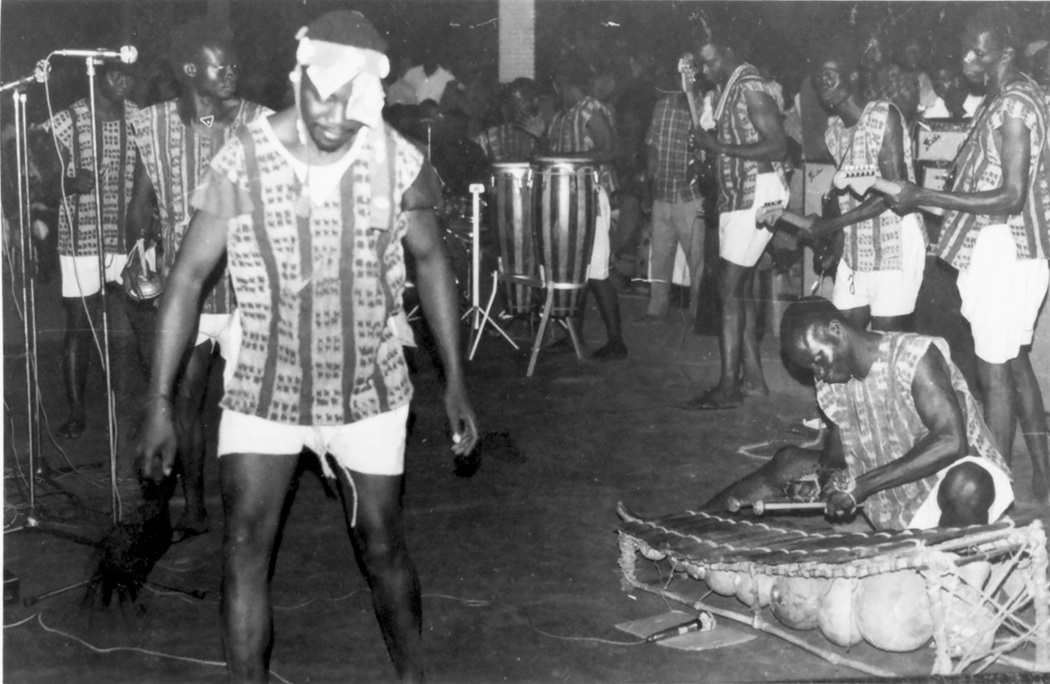 Tidianne and Dafra Star (Sanlé)
Tidianne and Dafra Star (Sanlé)
You say Tidiane Coulibaly left to form Dafra Star band, but had Volta Jazz actually broken up then? And if so, what year was that?
That would be around 1977, but Tidiane had left before that, because I think he wasn't satisfied with the way that Idrissa Koné in the end was behaving with him, and he saw that he could become someone more fashionable possibly, and gain outside exposure, and especially be known in Mali. The very first recordings that Tidiane Coulibaly and Dafra Star made were recorded in Mali with this very famous sound engineer Boubacar Traoré (not the singer) whom I met there. There was a tiny Radio Mali studio where all these great musicians from the Rail Band and Kanaga and Sidi Yassa and so on were recorded.
In Bamako. Back in the day.
Yes. At Radio Mali. The first album by Tidiane Coulibaly was recorded there in Mali. He went there basically to break away from Volta Jazz, because he saw that he didn't get the exposure that he deserved. That's how he started this band, and that's how he got his nickname, Joliba International, which meant that he had crossed the border to Mali, the Joliba River, and then later to the Ivory Coast where he recorded his first and last solo album, which came out on vinyl in the early ‘80s. Volta Jazz for the few remaining years, you know, stayed there. They put out their last LP in 1977 on Sonafric, and that was it. But that LP wasn't quite impressive, because most of the good people from the band had left. Tidiane Coulibaly had left, Yago Abdoulaye had left to move in with Dafra Star. Mustafa Maiga wasn't there, so there wasn't much left.
There is one Dafra Str song I especially love, the one with balafon, “De Nwolo.” What can you tell me about that song?
The song “De Nwolo” was recorded in Bobo Dioulasso, not in Mali as far as I know. It's a song that pays tribute to the rich cultural traditions of Bobo-Dioulasso, because Bobo Dioulasso, like Sikasso in Mali, is basically one of the regions where the balafon was, I wouldn't say born, but it was really a symbol of that region. The sacred balafon is in Guinea, of course, but in Bobo and Kenedougou and Sikasso in Mali, they have what they call the grand balafon. I think it has 23 slats of wood. Other balafons from Guinea and Mali are much smaller. So that song in a way pays its dues to that balafon heritage, and to basically to the tradition to which Tidiane Coulibaly belonged, because he was singing all these classic Mandingo songs, and a repertoire that he listened to on the radio.
As I told you, Bobo-Dioulasso was a commercial hub. As far as I know, there were at least a dozen record stores back then in the 1970s, so you have a lot of influences coming in, a little bit from Fela Kuti. There was a dance in Bobo at the time that was called the Shakara, after Fela Kuti’s hit from 1972. But you had music from France, you have a lot of Afro-Cuban music, music from Mali, from the Congo. Everything was played in Bobo-Dioulasso, and Tidiane Coulibaly wanted in a way with that song to get back to his musical roots with that balafon tradition. And it gives a rhythm that you don't hear in other Dafra Star songs. That song is very particular. It's a homage basically to the city and the tradition that they came from.
 Young Tidianne Coulibaly (Sanlé)
Young Tidianne Coulibaly (Sanlé)
Such a wonderful track. Tell me about about your process of looking for records. You said that a lot of them were only printed in batches of 500 or so. So where do you go to look for them, and where did you actually find them?
In Bobo, at the time I visited for the first time, over 10 years ago, there was still a tiny record store near the market. People would bring their old records and the guy would put them onto a tape, and basically, that's how I got access to some Bobo music, and then that guy told me, "Oh, you should see and visit this old guy, because he has records he's just about to throw away." So I would go there and manage to get a few more records. It was basically detective work. At some point, I was going on a motorcycle all across Bobo-Dioulasso because I knew that someone knew someone that had a few records.
The thing is that Bobo-Dioulasso has heavy rain, and like in lots of parts of Africa, when it rains, most of the houses are not well protected. So the records that belong to the past were stowed away in stores or places like that outside of the house. Most of them were water damaged and not in good condition at all. It was pretty rare in Bobo-Dioulasso—unlike what I have seen in places like Ghana, Benin, Mali, or even Senegal—to find records in good condition. I had to look. I've gone over 15 times to Bobo-Dioulasso over the years, so I was able to do it little by little. Eventually, I was able to locate most of these recordings. I may miss a few, because I know some particular records that I don't have yet. You have to be patient. It's just like fishing. Sometimes you don't catch anything. And sometimes you go somewhere, and in the most unexpected place, you find an amazing record. Sometimes I had to dig records out from the ground, because the guy had buried them in a plastic bag, you know, well sealed and everything buried in the ground. So I had to dig it up.
 Florent Mazzoleni, crate digging!
Florent Mazzoleni, crate digging!
Sometimes you find a lot of things, a lot of stories in the records that you get, sad stories sometimes really happy stories. You find pictures. You find memories. You find handwritten notes on the cover, so it tells the story of Bobo and the people. That's the story I wanted to tell with this box set Bobo Yéyé, which is basically how tradition and modernity came to clash together with great pleasure in Bobo-Dioulasso between the ‘60s and the ‘70s, this wonderful era of cultural and musical exchanges.
Bobo Yéyé. What does that mean exactly?
Bobo, of course, stands for Bobo-Dioulasso. And yéyé was a French expression from the early ‘60s. It was some French sociologist name Edgar Morin, crowing about the generation that came with Johnny Hallyday and Francois Hardy, and all these bands trying to imitate and emulate American rock 'n' roll bands. And he said that this generation was only able to pronounce these two syllables which are yéyé. So it was a nod to the Americanization in French pop music at the time. And at that time, the yéyé was quite a strong musical movement in France from the mid to late ‘60s. Basically, there was a lot of French music at that time – call it French beat or French pop or whatever-- that was popular in Burkina Faso at the time.
So the term yéyé really stuck in Bobo-Dioulasso. Sometimes, I would talk to old people, looking at their record collection, and they would say, “Ah, ca c’etait le yéyé. Ca c’etait la belle èpoche.” They always refer to the good times when basically everything was possible, and even without any money, you could manage to record a band to play some wonderful music, and to dress in fancy clothes, and just be creative. No matter how poor you were, you always had ideas and attitudes and the will to create this incredible music. And that's why I coined the term Bobo Yéyé, because it is really from Burkina Faso, and the yéyé refers to a period of pop culture, filled with Western influences, be they French or American, or even they can come from somewhere else.
That's fascinating. It makes me think about Fela’s tag line, “Everybody say Yeah yeah.”
Yes.
Yeah yeah, yéyé, and the Beatles’ "Yeah yeah yeah." It's all connected.
Exactly.
Nice work, Florent. And nice to speak with you. I am certain we will speak again. Thank you very much.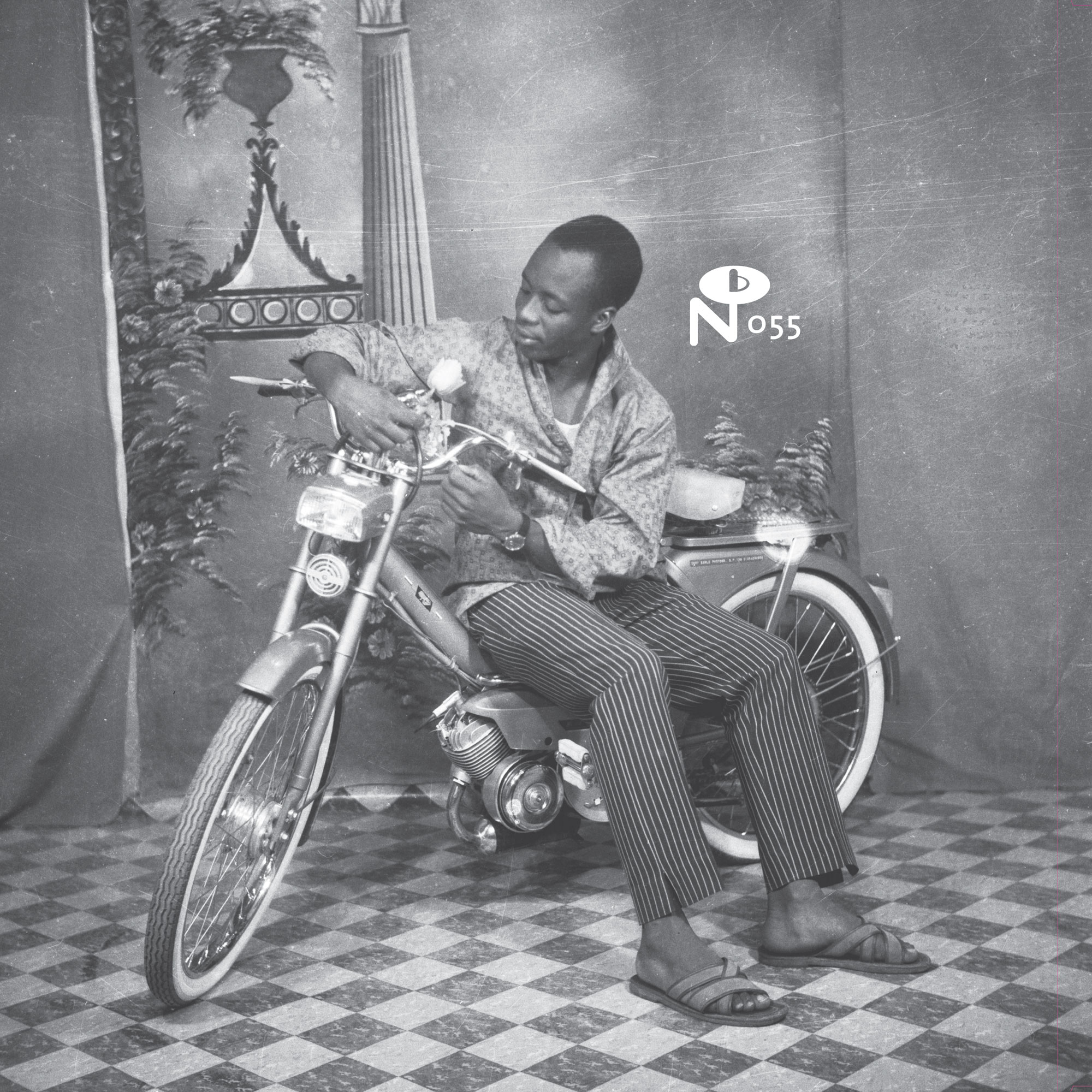 Bobo Yéyé cover art (Sanlé)
Bobo Yéyé cover art (Sanlé)








